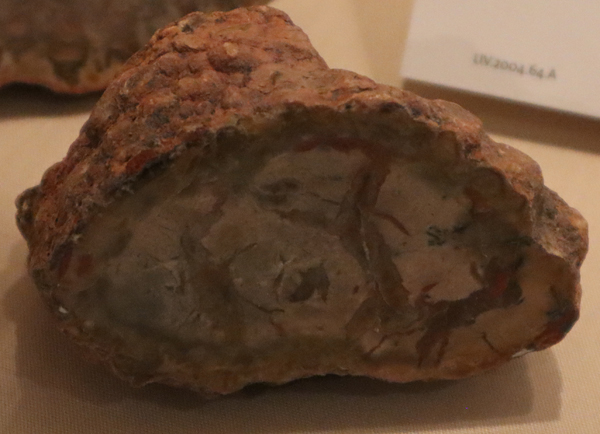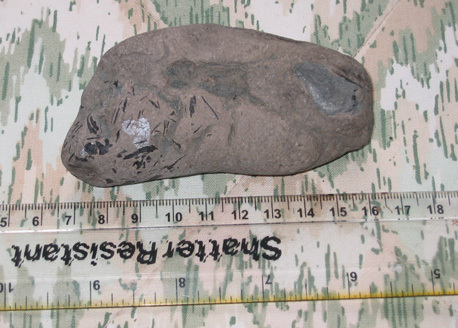Mystery Object from Everything Dinosaur
Every now and then we like to tease our readers by showing them a photograph of an object from our fossil collection. Having written about the Very Reverend Dr William Buckland yesterday, the 155th anniversary of the death of this English geologist and academic – we thought we would put up this picture.
A Mystery Object – What is This?

What could this strange object be? Picture credit: Everything Dinosaur.
Picture credit: Everything Dinosaur
Fans of dinosaurs and fossils – any ideas?
Mystery Fossil Object
This is an example of a coprolite. Dr William Buckland studied ichthyosaur coprolite, fossils found on the coast of Dorset. The famous fossil collector at Lyme Regis – Mary Anning had described a number of strange, stony objects that were often found in the body cavities of ichthyosaur fossil skeletons. These were known as “Bezoar Stones”, but no one was really sure what they represented. It was Anning who noticed that if such stones were examined carefully and even broken apart they contained strange, blackened fragments. These turned out to be the hard parts of belemnites and other squid, such as hooks and mouth parts, plus the occasional fish scale fragment
These observations by Anning lead William Buckland to propose in 1829 that the stones were fossilised faeces and the term coprolite was first used to describe them. The term coprolite has come to mean the general name for all fossilized faeces. Buckland also concluded that the spiral markings on the fossils indicated that ichthyosaurs had spiral ridges in their intestines similar to those of extant sharks. He also postulated that some of these coprolites were black because the ichthyosaur that has produced them had ingested ink sacs from belemnites.
In the picture above, we show a polished section of a coprolite. This gives palaeontologists the opportunity to assess the coprolite’s composition, that is, to work out what the animal had eaten. This coprolite came from a sauropod dinosaur, the preserved remains of plant material can be observed inside the fossilised dinosaur dung.
To view replicas and models of sauropods and other dinosaurs: Schleich Sauropods and Other Dinosaur Models.



